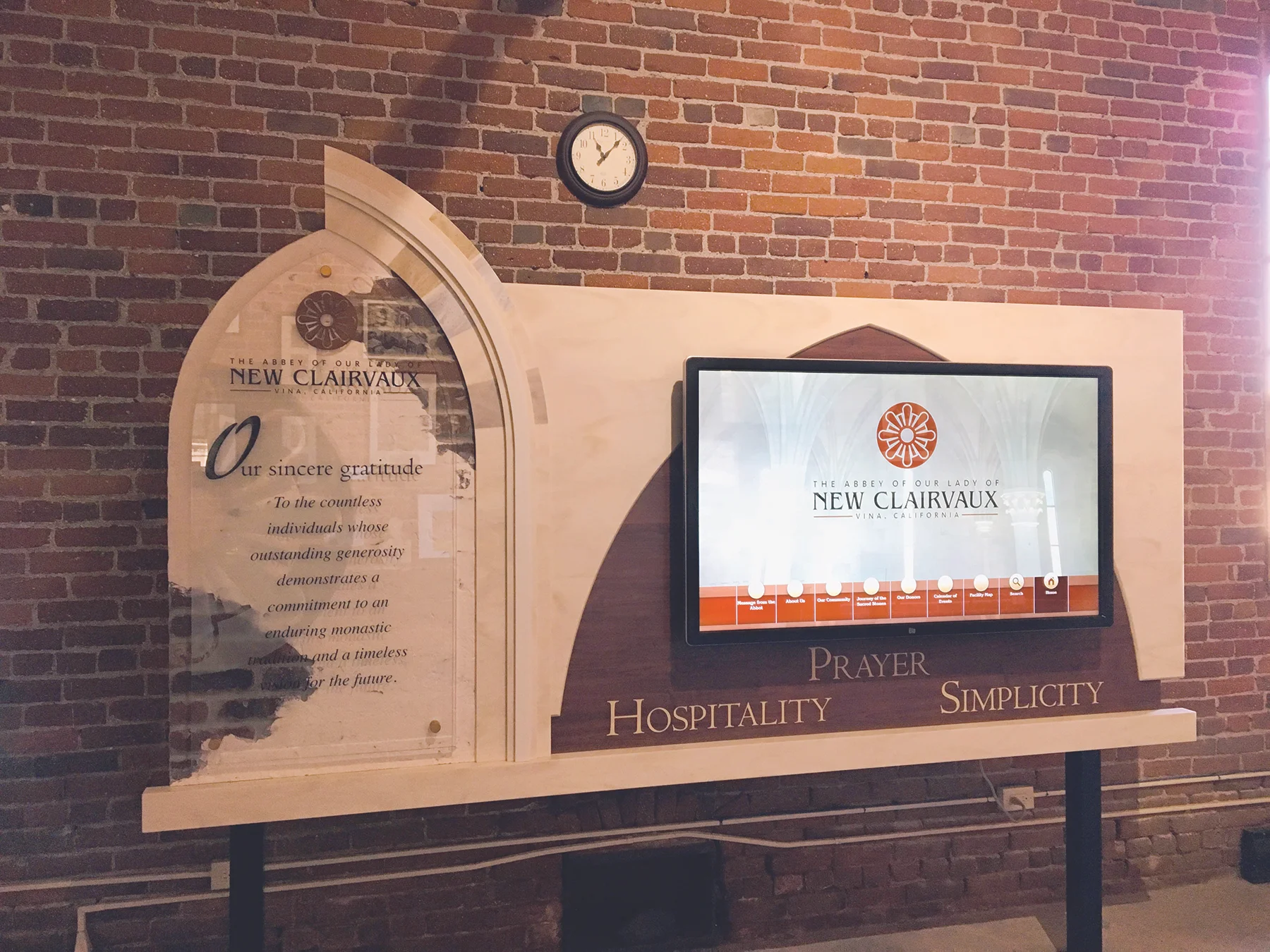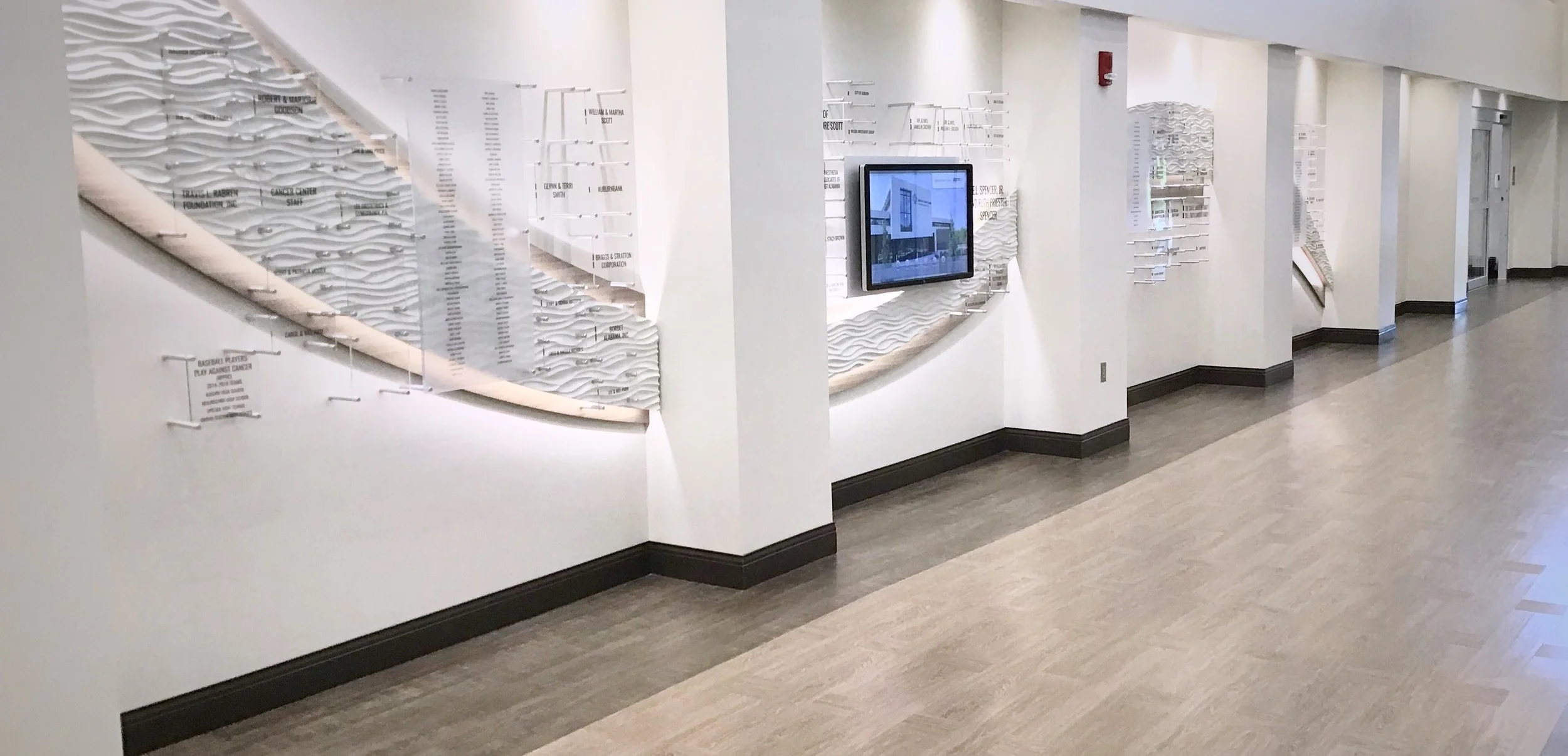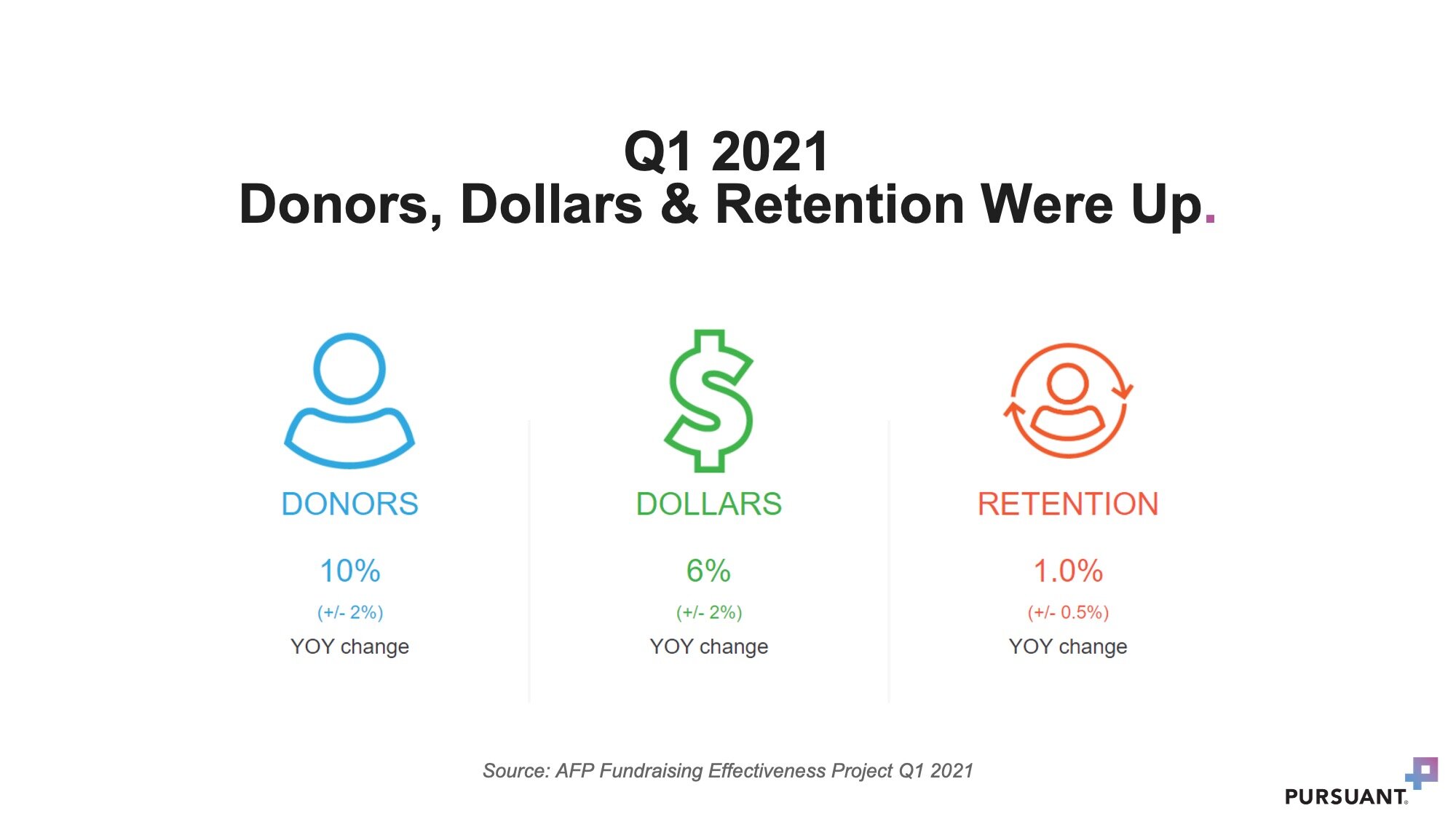It’s an understatement to stay that 2020 was an unpredictable year for everyone, nonprofits included. Last year the charitable landscape entered a crisis as it tried to tackle both the continuation of services and the industry's move to work remotely. A year of ups and downs for everyone, 2020 had both positive and negative effects on giving.
2020 saw an increase in online revenue, mostly from one-time and monthly giving, by 40% for COVID relief-related nonprofits and 22% for non-COVID relief-related nonprofits. The increase in donations resulted in a 26% increase in monthly revenue overall.
While these are encouraging statistics during a global pandemic, they need analysis against the other insights of 2020. For a holistic view of giving in 2020, we need to break down more of the metrics that matter. Based on AFP's Fundraising Effectiveness Project Q4, we anticipate seeing the changes in giving over the year 2020 below:
Total number of donors is up 7.3%
Donations are up 10.6%
Donor retention is down 4.1%
These stats resulted from a low first quarter in 2020, which without the new statistics of the first quarter of 2021 would have made the conversation about new donor retention dire. What AFP's Fundraising Effectiveness Project Q1 for 2021 shows is organizations that emphasize retention, welcoming new donors, and inviting them to be a greater part of their mission were successful. Specifically, the report showed:
New donors are up 3%
New retained donors are up 12.9%
Repeat retained donors are up 5.5%
Recaptured donors are down 2.8%
2020 was a year of mixed results, but the data shows that donor retention needs to remain one of the main focuses in 2021 and beyond. Seeing the generosity and attention given to nonprofits during 2020 as the world dealt with the effects of COVID-19 was truly special. Converting the increased one-time donations into long-term growth requires a commitment to retention.
A Blackbaud study found that only two to three donors out of 10 make a second gift. If there is a focus on retention, and you can get that second gift from a new donor, the retention rate going forward increases to 60% on average. This study is supported by a donorCentrics Summit on sustainers, which had a few interesting statistics to look at for the fiscal year of 2020:
Single gift multi-year retention was 57%
Median retention rate for multi-year sustainers was 85%
Retention rate for sustainers that donate for three or more consecutive years is 95%-98%
The major takeaway? It is essential to transform as many of your new donors into multi-year donors as possible, building strong donor loyalty and retention.
donor recognition and retention
There are many ways to engage a donor, but the most valuable methods are the ones that make them feel like part of the organization. This strategy is called "donor-fusion." One of the simplest but most effective ways is personalized thank-you letters. If sent within the first 48 hours, thank-you letters can have a staggering impact on retention. While there are many ways to thank a donor, the best include conveying the message that the donor is part of the team.
Donors prefer not to feel like an ATM. They want to feel like they are helping to accomplish the goal of your organization. In fundraising, we refer to this concept as donor-centricity. To put it simply: celebrate donors for the vital role they play in your mission and for what they have helped accomplish within your organization.
A powerful way to elicit that bond is to send a series of emails or other correspondence that communicate the impact of their donation. Examples include personalized emails targeted toward a specific group for upgrading based on capacity and affinity.
Here is an example of one animal welfare organization that successfully used a targeted approach to its donor base to upgrade its mid-level donors. Fundraisers looked at a specific group of their donors to identify those with the capacity to give and affinity for giving to similar organizations. These donors fit the following criteria:
High net worth
Current mid-level donations
High potential discretionary spending
Interested in their cause
Preferred digital communication
Emails opened at a higher rate
With this segment of their donor file selected, they created a series of personalized emails highlighting the impact donors have, which eventually resulted in five $100,000 donations from donors that had never donated over $2,500 annually. This type of segmentation is attainable through careful analysis of a file or a third-party platform, like GivingDNA, which can give you actionable metrics based on your files.
This story is an incredible result of targeted donor recognition. So, while the traditional form of wealth screening has been effective, understanding how your donors think and feel about the impact they are having is even more impactful. This data shows us two things: it is better to start your donor recognition plans sooner rather than later, and we need to ask the right questions to understand our donors.
understanding your donors
In 2020, we can see that there was an increase in donations across the board. But again, we need to look at AFP's Fundraising Effectiveness Project Q4 reporting to see what is influencing that.
General Donors (under $250) had a 15.3% increase in 2020
Mid-Level Donors ($250-$1000) had an 8% increase in 2020
Major Donors (Above $1000) had a 10.4% increase in 2020
These are all significant numbers, but the one category that stands out is the major donors. They account for 85.1% of the dollars donated in 2020, which is why it is valuable to ensure you have a strong strategy for upgrading and retaining your most passionate supporters.
Mid-level donors can be upgraded to major donors, just like we saw in the example above if you know where to look. The next step in that process is understanding what motivates an individual to make a substantial financial commitment.
However, asking the right questions when you have a potential major donor in front of you is difficult. The temptation to have a pleasant conversation over having a more goal-oriented conversation is strong. There are important insights you can gather from asking the right questions.
The right questions have some intrinsic qualities that you should keep in mind:
Questions are purposeful, and the answers get noted strategically
Questions seek to find a deeper connection between the donor and the organization
Questions allow donors to see themselves as central to the solution
Questions allow room for follow-up questions
These questions will result in a fulfilling conversation and make the donor feel valued and appreciated. This strategy is a compelling way to motivate major donors and create donor fusion. Making them feel heard and understood is essential to establishing long-lasting relationships with your donors.
While 2020 was a challenging year, it showed that in difficult times, people are still generous. They still care about the work that your organization is doing for causes they find important to them. That is what the numbers show, without a doubt.
When it comes to donor retention, fundraisers should focus on recognizing, thanking, and celebrating the donors whose contributions make achieving your organization's goals possible. Bring them into the conversation, show them what you are doing, and you will see that they will respond to that in kind. Through understanding your donors, their affinity, and capacity, you can upgrade donors and retain them for longer.
If you are looking for ways to improve your organization's donor recognition programs, big or small, Eleven Fifty Seven can help. Eleven Fifty Seven offers custom designs built to fit your budget and engage your donors. With over 50 years of experience and over 3,000 partnered organizations in the United States and Canada, Eleven Fifty Seven is ready to help you achieve meaningful donor recognition.
This post was contributed by Rebecca “Becca” Segovia, a seasoned fundraising executive with a strong vision and passion to help nonprofits reach more donors and raise more dollars to further their mission. At Pursuant, Becca is a creative leader providing guidance across client services, marketing and sales to help nonprofit organizations achieve breakthrough results. She has a special affinity for omni-channel and relationship-based fundraising strategies aimed at increasing donor lifetime value and nonprofit health.







